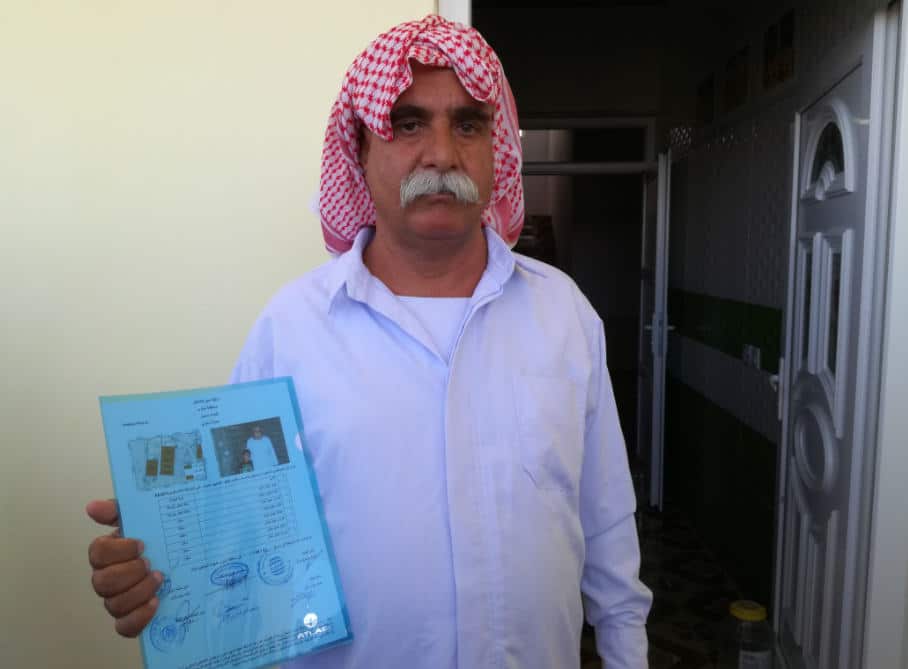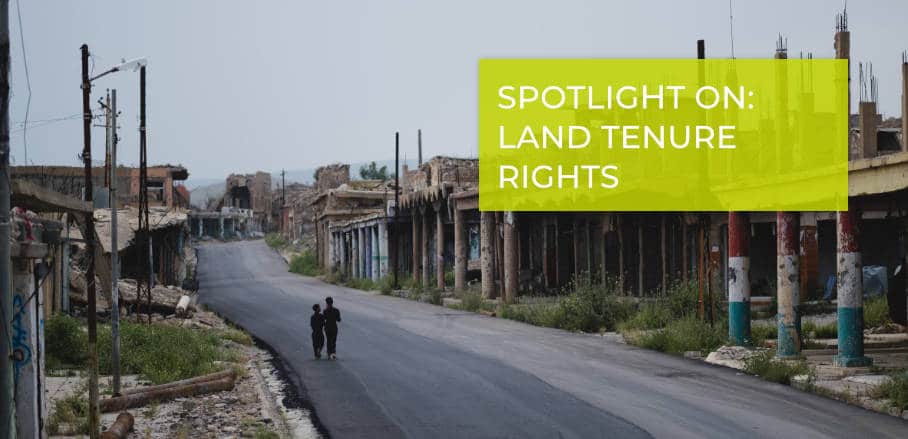Leave No One Behind: Land Tenure in Post-Conflict Iraq
Minorities, women, and persons internally displaced face severe land tenure issues in post-conflict Iraq. In this acute analysis, UN-Habitat Iraq presents ways forward for conflict-affected areas.
Iraq has experienced several waves of mass displacement over the last 40 years, which have contributed to tenure issues, including the loss of property, forced deportation and prolonged displacement. Addressing housing, land and property rights in Iraq is thus critical for its reconstruction and peacebuilding process.
UN-Habitat is the focal point within the United Nations system for all urbanisation and human settlements matters and is mandated to promote sustainable urban development. In Iraq, UN-Habitat chairs the Housing, Land and Protection Sub-cluster under the Protection Cluster. Based on the strong technical expertise on urban and housing, land and property rights issues, UN-Habitat has been addressing tenure issues in post-conflict Iraq since 2016, implementing several projects that specifically focus on Yazidi minority in Sinjar, IDPs and returnees to conflict-affected areas, and vulnerable women.
Challenges Faced by Ethnic and Religious Minorities
In the 1970s, the Ba’ath regime promoted the modernisation of rural areas by confiscating privately-owned land throughout the country, followed by the enforcement of “Arabisation” of Northern Iraq which targeted Iraqi minorities and their land and property to increase political control over these minorities. This caused the displacement and relocation of hundreds of thousands of minorities away from their homes, including the forced deportation of 100,000 Yazidis from their hometowns in Sinjar, northern Iraq, and relocating them to new residential complexes. Moreover, the Yazidi minority was prevented from returning to their area of origin, as the previous regime had destroyed entire villages, including homes, orchards and water sources, concurrent with the deportation process. The second discrimination against Yazidi land rights occurred when the regime denied them the right to register the assigned land in their names. The discrimination against Yazidi’s land rights continued even after the fall of the regime.
The challenges faced by minorities were aggravated by the recent ISIL occupation. Since 2014, when ISIL started its brutal violence against minorities including Yazidis, massive displacement occurred. An estimated 250,000 people or 146 villages inhabited by Yazidis were forced to abandon their homes. Meanwhile, unoccupied Yazidi settlements were either systematically demolished or seized by ISIL fighters and allocated to its supporters. Unlawful seizures and sales of land and property by armed opposition groups, secondary occupation, and the systematic looting and destruction of homes and property, were common. Even after the liberation of Sinjar, Yazidis have a major challenge to return because they cannot prove their land/housing ownership or occupancy rights through official documents.
Challenges Faced by Internally Displaced Persons and Returnees
While Yazidis were one of the groups that were most severely affected by the ISIL occupation, the conflict between ISIL and the Government of Iraq impacted a much broader population in Iraq, resulting in the displacement of more than 6 million persons at its peak. The Government of Iraq has declared the end of war against ISIL in December 2017, but since then, more than 1.2 million people remain displaced, and those who managed to return also face various tenure challenges.
Tenure challenges faced by internally displaced persons and returnees primarily arise from:
• loss of and damage to housing and properties;
• complicated procedures to request for compensation of damaged houses and properties and slow processing of the requests by the government;
• loss of, damage to, or intentional confiscation of official documents that make it difficult to prove the ownership of house or properties; and
• disputes arising from secondary occupation or illegal trade of housing and properties during the conflict.
Challenges Faced by Women
Although the Iraqi constitution and Iraqi laws on housing, land and property recognise women and men as equal, in practice, women often face barriers to accessing their property rights because of illegal traditional and cultural norms. Particular discrimination occurs against gender-based violence survivors and female heads of households who have often been subject to discriminatory practices and denied assistance, which complicates proving the legality of their occupation of land and property.
Often, they are pressured to give away their inheritance in favour of other male family members. Women also face challenges when transferring or registering their property inherited from their deceased husbands, reclaiming their property, or claiming compensation for damaged property.

A Yazidi returnee to Sinjar holding an Occupancy Certificate issued by UN-Habitat © UN-Habitat Iraq
Responses by UN-Habitat: The Social Tenure Domain Model
UN-Habitat addresses tenure challenges through a unique approach based on community consultation and the use of the Social Tenure Domain Model (STDM). STDM is a tool developed by the Global Land Tool Network (GLTN) to address land tenure claims that are not based on formal cadastral parcels and that are not registered and can be used on free and open software to manage land information. In Iraq, UN-Habitat customised STDM as a digital survey tool to collect information through mobile devices, allowing digitalisation and registration of housing, land and property rights information on the spot while respecting local circumstances and cultural norms.
This has enabled an efficient collection and verification of housing, land and property information by UN-Habitat in collaboration with community members and local authorities, even in sensitive post-conflict environments. Most importantly, because it does not rely on the conventional and formal land administration systems, STDM helps to identify individual’s relationships to the land, including those of minorities, displaced persons and returnees, and women.
One of the key results delivered by UN-Habitat in Iraq using STDM is the issuance of occupancy certificates to Yazidis in Sinjar. As mentioned earlier, Yazidis have been denied registering their land rights and were not able to own any formal documentation that certifies their land ownership. Using the information collected through STDM as well as a series of community consultation meetings, UN-Habitat has been mapping and verifying occupancy claims by each Yazidi returnees, and issuing occupancy certificates that state the household’s location, names of the household members, and photos as an interim measure to facilitate their returns.
The occupancy certificates are signed by local authorities, community representatives, the returnee him/herself, and UN-Habitat. More than 7,500 occupancy certificates were issued to date. To accomplish official recognition of the Yazidis tenure, UN-Habitat is working with the Government of Iraq to formalise their occupancy rights verified through STDM into full land ownership titles approved by the Iraqi Ministry of Justice.
The use of STDM can shed light to address the tenure issues of vulnerable people, especially in conflict-affected settings like Iraq where conventional and formal land administration systems are not fully functional. Recognition of tenure rights utilising information collected and verified through STDM is an important step for Iraq to achieve reconstruction, sustainable return and peacebuilding while leaving no one behind.
- Leave No One Behind: Land Tenure in Post-Conflict Iraq - 16. March 2021
